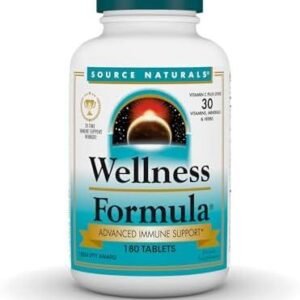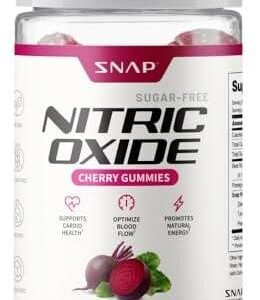In a world increasingly awakened to the complexities of food, the conversation surrounding dietary restrictions has evolved from mere avoidance to a remarkable exploration of nourishing alternatives. Food allergies, once viewed as insurmountable roadblocks to culinary enjoyment, are now inviting us to think creatively about nutrition and wellness. This article delves into the art of mastering food allergies through informed dietary choices, empowering individuals with the knowledge they need to transform their eating experiences. As we unravel the intricate relationship between food and health, discover how strategic nutrition can turn challenges into opportunities, leading to flavorful meals and vibrant living. Join us on a journey where understanding and creativity collide to redefine the narratives of food allergies, fostering a community that thrives on delicious, inclusive dining.
Table of Contents
- Exploring the Landscape of Food Allergies and Their Nutritional Impacts
- Crafting an Allergy-Friendly Pantry: Essential Ingredients and Substitutes
- Empowering Meal Planning: Strategies for Balanced and Safe Eating
- Holistic Approaches to Allergy Management: Beyond Diet to Overall Wellness
- Insights and Conclusions
Exploring the Landscape of Food Allergies and Their Nutritional Impacts
Food allergies are a growing concern, impacting millions of people worldwide. These allergies not only affect daily choices but also hold considerable implications for overall health. Individuals with food allergies often find themselves navigating a complex landscape, where avoiding allergens becomes a priority, sometimes at the expense of nutrition. Understanding the nutritional consequences of eliminating certain foods is crucial. Indeed, the absence of major allergens, such as dairy, nuts, and gluten, can lead to nutritional deficiencies if not managed properly. Therefore, a deep dive into alternative nutrient sources is essential to maintain a balanced diet.
Holistic approaches to nutrition can help address these gaps. Instead of just removing food groups, individuals can seek diverse sources of essential nutrients. Consider incorporating a variety of options such as:
- Legumes and Pulses: For protein and fiber, beneficial for those avoiding dairy and meat.
- Seeds and Nut Butters: Excellent alternatives for healthy fats, packed with vitamins and minerals.
- Whole Grains: Quinoa, rice, and millet serve as gluten-free options providing necessary carbohydrates.
It is vital for those managing food allergies to collaborate with nutritionists who specialize in this area. Tailored meal plans can ensure the inclusion of all necessary nutrients while respecting food sensitivities. As a guideline, here’s a simple table highlighting potential substitutes and their nutritional benefits:
| Allergen | Substitute | Nutritional Benefits |
|---|---|---|
| Dairy | Almond Milk | Calcium, Vitamin E |
| Peanuts | Sunflower Seed Butter | Healthy Fats, Vitamin B6 |
| Wheat | Oat Flour | Fiber, Beta Glucans |
Crafting an Allergy-Friendly Pantry: Essential Ingredients and Substitutes
Creating a pantry that caters to food allergies can be a simple yet rewarding task. Start by stocking essential ingredients that are naturally free from common allergens, ensuring your meals remain both delicious and safe. Consider adding items like quinoa, which is a versatile grain high in protein, and coconut flour, a gluten-free alternative perfect for baking. You might also include nut butters made from seeds or chickpeas, ideal for spreads and snacks, along with tahini, which can add depth to dressings and sauces.
Substituting for allergens doesn’t mean sacrificing flavor or nutrition. For example, use applesauce or ripe bananas as a substitute for eggs in baking, providing moisture and sweetness without the allergens. When it comes to dairy, consider almond milk, oat milk, or coconut yogurt for a lactose-free option that still delivers on creaminess. Additionally, use a variety of herbs and spices to elevate your dishes without the risk associated with processed foods. By curating these ingredients, you not only support a safe eating environment but also open the door to culinary creativity.
Empowering Meal Planning: Strategies for Balanced and Safe Eating
Meal planning can be a transformative journey, especially when navigating the complexities of food allergies. To facilitate well-balanced eating, start by integrating a variety of food groups into your weekly menus. Consider the following strategies:
- Plan Your Proteins: Incorporate a diverse range of protein sources such as legumes, nuts, seeds, and lean meats. This ensures not only variety but also helps in avoiding allergens.
- Color Your Plate: Aim for a colorful array of fruits and vegetables, each contributing unique nutrients. This habit enhances the visual appeal and nutritional value of your meals.
- Pre-Prep Snacks: Organize healthy snacks in advance—think carrot sticks with hummus or sliced apples with sunflower seed butter—to keep cravings in check.
A vital component of meal planning is label reading and understanding potential allergens. Create a personal database or spreadsheet where you can log your safe foods and any brands to avoid. Here’s a simple table layout:
| Food Item | Allergens | Safe Brand |
|---|---|---|
| Peanut Butter | Peanuts | SunButter |
| Granola | Nuts, Gluten | Purely Elizabeth |
| Oatmeal | Gluten | Bob’s Red Mill Gluten-Free |
Continuously update this resource as you discover new safe products or when existing manufacturers change their formulations, ensuring your meal planning remains empowered and secure.
Holistic Approaches to Allergy Management: Beyond Diet to Overall Wellness
Managing food allergies requires a comprehensive approach that connects the dots between dietary practices and overall well-being. It’s essential to dive deep into the root causes of allergies, which may be influenced by various factors beyond what’s on our plates. Stress management, regular physical activity, and mental health play a significant role in strengthening the immune system and reducing allergic responses. Incorporating mindfulness practices, such as yoga or meditation, not only promotes relaxation but can also positively affect how our bodies react to allergens. It’s about creating a harmonious balance that nurtures the body and mind.
Moreover, maintaining a healthy gut flora can significantly enhance our body’s tolerance to allergens. Probiotic-rich foods like yogurt, sauerkraut, and kefir, along with high-fiber fruits and vegetables, can contribute to gut health and support immune function. Here’s a simple guide to integrating holistic practices into your daily routine:
| Practice | Benefits |
|---|---|
| Meditation | Reduces stress levels |
| Exercise | Enhances immune response |
| Probiotics | Supports gut health |
| Nutrition | Provides essential nutrients |
By focusing on these holistic approaches, individuals can create a multi-faceted strategy that not only tackles food allergies but also fosters a sense of vitality and resilience. The journey toward mastery over food allergies is not just about what we eliminate, but how we nourish ourselves on multiple levels.
Insights and Conclusions
As we conclude this exploration into the nourishing solutions for mastering food allergies through nutrition, it’s clear that the journey to optimal health and well-being involves more than simply avoiding allergens. It invites a vibrant engagement with the diverse world of food, where understanding and creativity take center stage. By embracing a proactive approach, we not only empower ourselves and our loved ones but also transform challenges into opportunities for culinary exploration.
In the face of food allergies, knowledge truly is our best ally. Each meal becomes a canvas, a chance to experiment with new flavors, textures, and ingredients—opening the door to delicious possibilities while ensuring safety and health. We encourage you to approach every dining experience with curiosity and mindfulness, honing the skills to read labels, connect with local food producers, and innovate within the kitchen.
Remember, mastering food allergies is not just about restrictions; it’s about discovering nourishing alternatives and fostering a lifestyle that celebrates wellness. As you embark on this journey, trust that you hold the power to create sustenance that heals, empowers, and nourishes. Together, let’s savor the richness of life, one mindful bite at a time.





